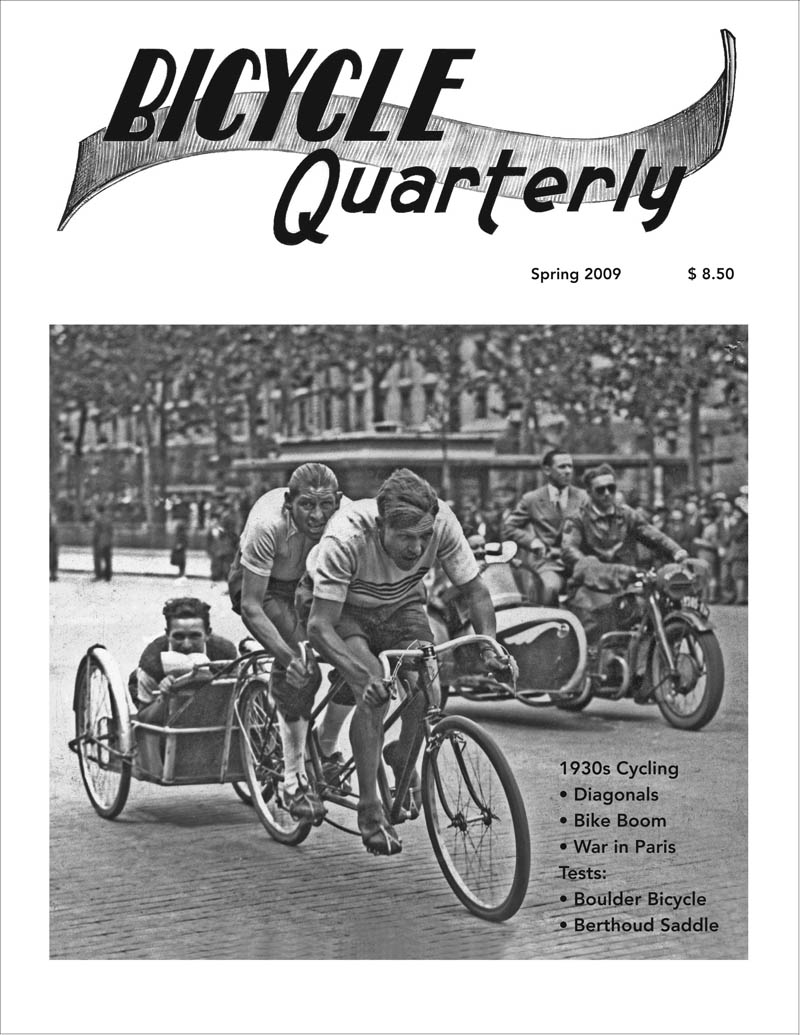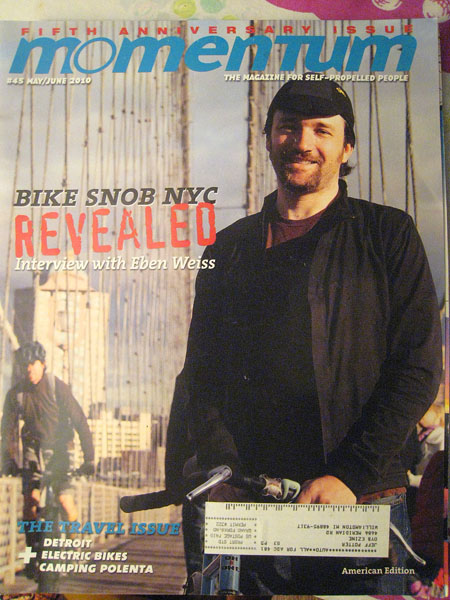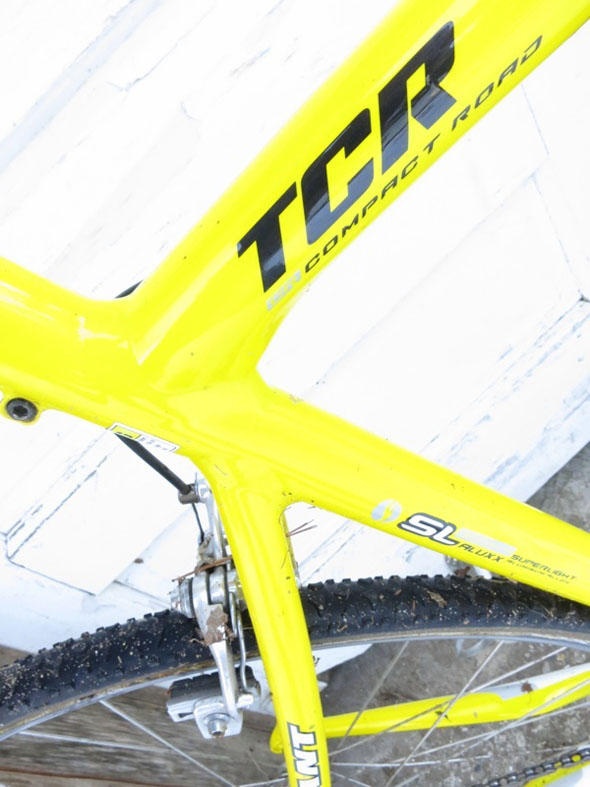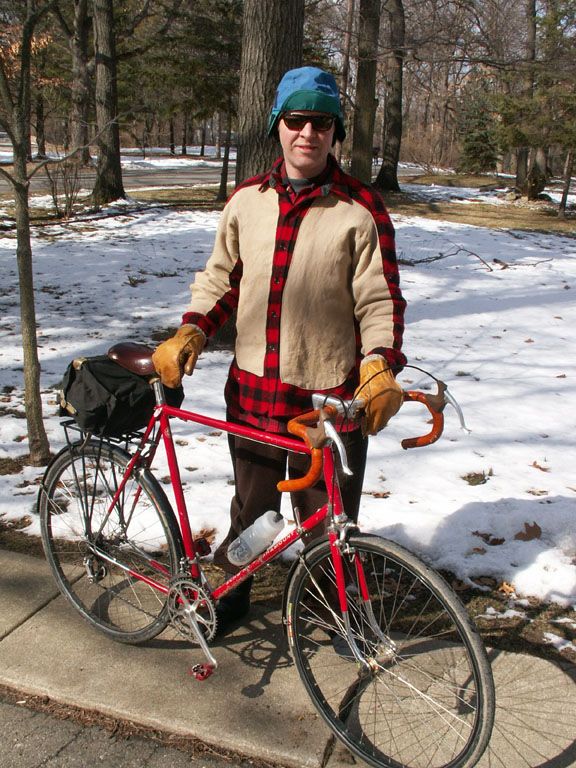Man, what a whopper of an issue! It’s so RICH with cycling concepts and lore that you’ll need more than a steak knife and more than lots of time. You need to be ready for it, to clear your head.
OK, it’s hard to say what you’ll need. This issue is even a bit intimidating. I’m waiting for enough spare time not only to read and understand but to fully appreciate its scope.
I mean, there’s the phrase “contemplative cyclotourists” from an overview of the first rando riders, and their tongue in cheek bragging about being the slowest riders to finish the huge French Diagonales, and their “anti-rivalry” — or conceptual rivalry? — that would be French — with the “sporting cyclotourist” record breakers.
This Spring 09 issue includes several amazing heritage reprints that are timeless.
The emphasis on tandeming is stirring. I’ve long thought that tandems need to be brought more fully into the fold. I mean, they’re a big part of the scene today but there’s something lacking. I can’t quite put my finger on it. Of course there’s an emphasis on married tandeming, but that’s not it. I know of quite a few “new partner every day” have-great-fun tandemeers. Maybe it’s the integrated nature of the vintage rando tandems. Yet I see many local club tandems set up with lots of well-tested, well-worn accessories to give a “just so” riding/touring experience (it seems lots of effort is often put into arranging the stoker cockpit).
Maybe what I miss in today’s tandems is a sense of integration, spaciousness and refinement. I don’t mean padding, gel-seat and shock absorber comfort, achieved via strap-on’s. I mean that the vintage tandems look of a piece, like a fine tandem canoe outfitted for a weeklong trip. They look even a little like a small beachcruising sailboat on a trip. There’s roominess in the cockpit. These tandems seem quite LONG. And all the supplies you need are lashed into suitable and unobtrusive “hatches” where you need them to be for a good day’s sail, I mean, ride. The vintage tandems look springy, with fine, curved forks and long stays. Nice fenders and saddlebags, frontbags, lights, wide bars. The plump tires look like they’ll give a cush yet lively ride. “Cast off, matey!” My hope is that such a tandem doesn’t need to be HEAVY or SLOW. Some bikes I saw at the NAHBS show looked so integratingly accessorized that they might weigh 50 lbs. Yet these old tandems look LIGHTWEIGHT. The challenge is getting a complete bike which isn’t built with an ounce of excess (not in its luggage either). A fine, thin, delicate looking bike can be perfectly strong! These tandems are simply shipshape. “Everything in its place and of suitable quality” isn’t a fussy value. It’s a survival value!
Anyway, these are some notions that come to me as I dig into this issue…
I enjoyed seeing the “half price” integrated rando bike from Mike Kone’s Boulder Bicycles get such all-round praise. Someday maybe I’ll get the chance to ride a constructeur bike…as well as to ride a crabon bike!
And the cover is very cool, too.
Subscribe and enjoy! –JP
TABLE OF CONTENTS
1930s Cycling:
• The French Diagonals: the first organized, unsupported long-distance rides
• War-Time Cycling in Paris
• The Technical Trials and Modern Lightweight Bicycles
(The cover photo shows the winning team at the 1943 tandem taxi races in Paris.)
Bicycle Touring Boom during the Depression: How paid vacations allowed 1930s French workers to travel by bicycle.
TEST: Boulder Bicycle Randonneur
An affordable, fully integrated bicycle that is ready to go, any distance, any weather, any terrain, even at night.
1960 René Herse Fédéral
An affordable, fully integrated bicycle from 1960, ordered by Dr. Clifford Graves for his first European tour.
Ride: Brest-Menton in 1930
The first diagonal – 1502 km on a tandem in adverse weather. A true adventure!
The Cyclos Montagnards:
A return to the roots of randonneuring with an emphasis on performance and self-sufficiency.
Builders Speak: Making a Mandrel to bend fork blades
The challenge of getting a tight bend at the bottom of the blade.
Randonneuring Basics: Avoiding the Bonk
How to feed your body on long-distance rides.
https://www.vintagebicyclepress.com/currentissue.html




